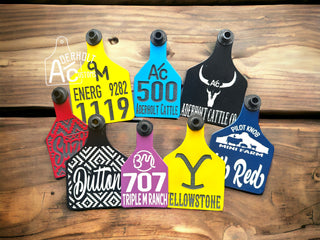Ritchey Ear Tags
Using the proper tools when applying ear tags is critical to ensure tag retention and animal comfort. Ritchey ear tags, known for their durability, are designed for use with Ritchey clover back buttons, but they are also compatible with Allflex and Y-Tex back buttons when paired with the respective Allflex or Y-Tex taggers.
When using Ritchey clover back buttons, it is essential to equip your tagger with a Ritchey tool pin. Any tagger with a screw pin can be adapted by swapping in the Ritchey tool pin. Without this pin, the tagger may punch through the side of the back button shaft, leading to poor application and reduced retention. Proper tagging tools not only improve performance but also help avoid costly re-tagging and ensure the tag stays securely in place.
At Aderholt Customs, we proudly offer all three types of back buttons along with the matching taggers and the Ritchey tool pin--ensuring that you have everything you need for seamless tagging.








